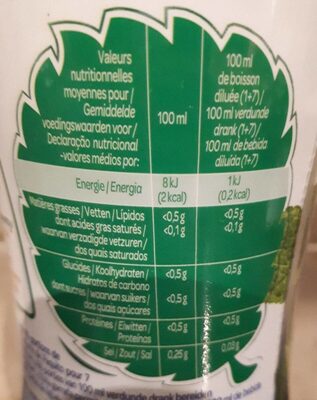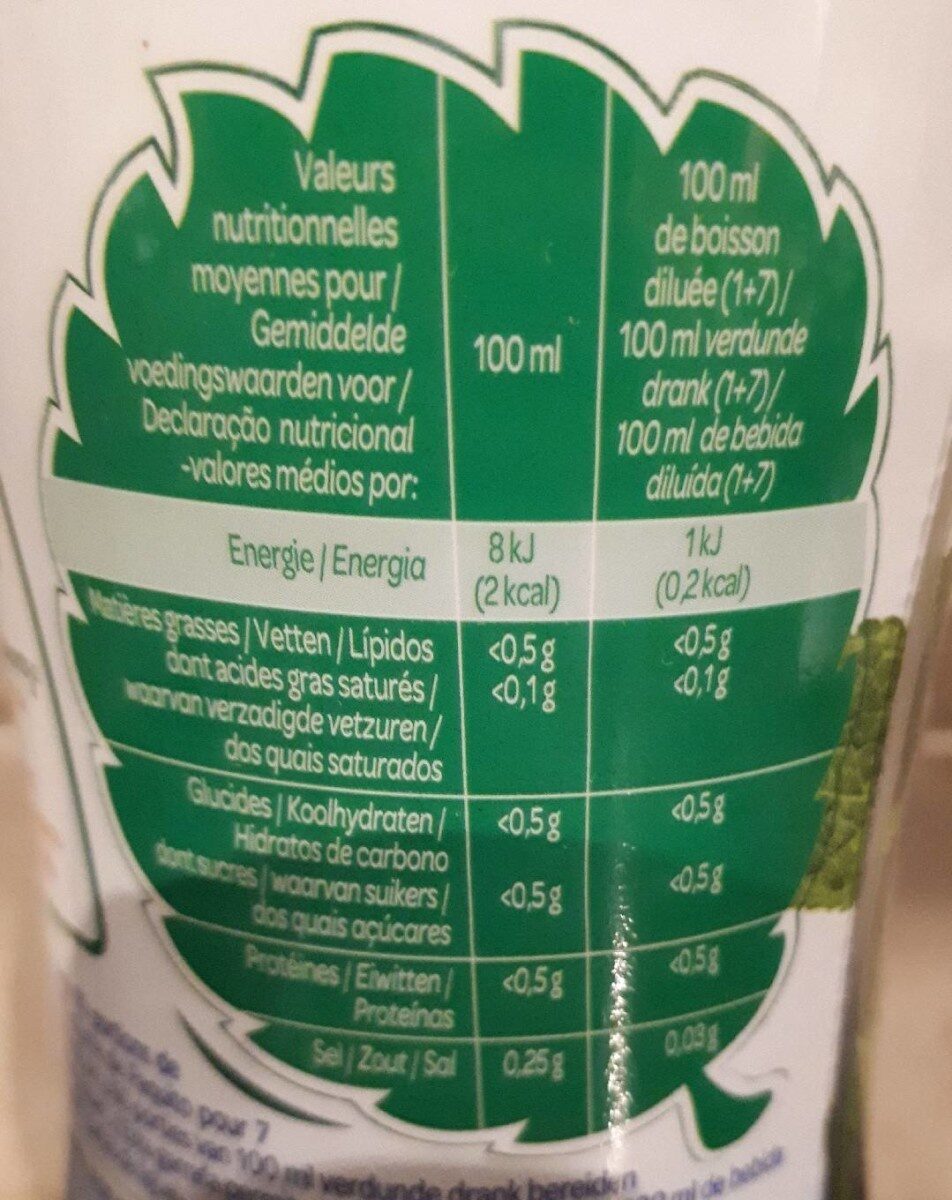Boisson à diluer saveur menthe zéro sucres - Paquito - 75 cl
This product page is not complete. You can help to complete it by editing it and adding more data from the photos we have, or by taking more photos using the app for Android or iPhone/iPad. Thank you!
×
Some of the data for this product has been provided directly by the manufacturer .
Barcode: 3250390953586 (EAN / EAN-13)
Common name: Boisson concentrée à diluer sans sucres avec édulcorants saveur menthe
Quantity: 75 cl
Brands: Paquito
Categories: Beverages, Syrups, Artificially sweetened beverages, Flavoured syrups, Mint syrups, Sugar-free flavoured syrups
Traceability code: EMB 73179E - Motte-Servolex (Savoie, France)
Stores: Intermarché
Countries where sold: France
Matching with your preferences
Environment
Carbon footprint
Packaging
Transportation
Report a problem
Data sources
Product added on by openfoodfacts-contributors
Last edit of product page on by alexfauquette.
Product page also edited by k13b3r, kiliweb, laurent1971, org-les-mousquetaires, packbot, segundo, yuka.SGZsUkdway92OXBRbnZRbitoYlR3WWhseTcrYlhFcWNJc013SVE9PQ, yuka.UlkwNFFQc2UvY2czZ004TXh4SDF3WWxLeE1DdWN6K2xBclU2SUE9PQ, yuka.Uzc0RUZZbzh1S1pid004bTF3SHFvTmh3K0lXVEJuMlBHdGdQSWc9PQ, yuka.V1kwdFM0c2NnUFVPc01GdjdCUGEySWg0bThhVlZucU9NODRJSVE9PQ, yuka.WVA1Y0hZQXVwY1UybWNjVG9BbUo2L2gwNkxxbWREaTRDTFVUSVE9PQ, yuka.YmFNdU52NGFxZU5UdmNJYnp6L2wyNDFhL0lLRFgzeUhKTmd4SVE9PQ, yuka.sY2b0xO6T85zoF3NwEKvlmZ6UsPurhvAHhv5plCM4caTDJPjZdRzvoPAHao.








